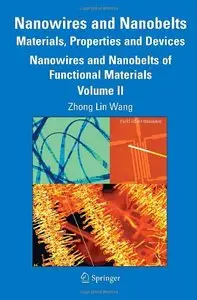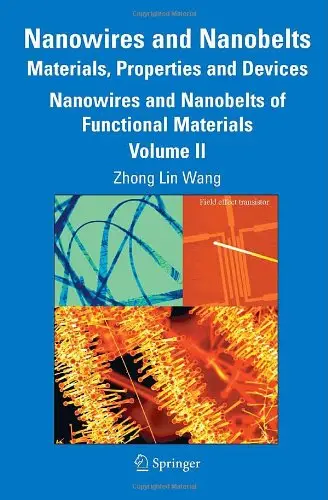Nanowires and Nanobelts: Materials, Properties and Devices: Volume 2: Nanowires and Nanobelts of Functional Materials By Zhong Lin Wang
Publisher: Springer 2005 | 300 Pages | ISBN: 038728706X | PDF | 21 MB
Publisher: Springer 2005 | 300 Pages | ISBN: 038728706X | PDF | 21 MB
Nanowires, nanobelts, nanoribbons, nanorods ..., are a new class of quasi-one-dimensional materials that have been attracting a great research interest in the last few years. These non-carbon based materials have been demonstrated to exhibit superior electrical, optical, mechanical and thermal properties, and can be used as fundamental building blocks for nano-scale science and technology, ranging from chemical and biological sensors, field effect transistors to logic circuits. Nanocircuits built using semiconductor nanowires demonstrated were declared a "breakthrough in science" by Science magazine in 2001. Nature magazine recently published a report claiming that "Nanowires, nanorods, nanowhiskers, it does not matter what you call them, they are the hottest property in nanotechnology" (Nature, 419 (2002) 553). There is no doubt that nanowire based quasi-one-dimensional materials will the new focal point of research in the next decades. This two volume reference, Nanowires and Nanobelts: Materials, Properties and Devices, provides a comprehensive introduction to the field and reviews the current state of the research. Volume 1, Metal and Semiconductor Nanowires covers a wide range of materials systems, from noble metals (such as Au, Ag, Cu), single element semiconductors (such as Si and Ge), compound semiconductors (such as InP, CdS and GaAs as well as heterostructures), nitrides (such as GaN and Si3N4) to carbides (such as SiC). The objective of this volume is to cover the synthesis, properties and device applications of nanowires based on metal and semiconductor materials. The volume starts with a review on novel electronic and optical nanodevices, nanosensors and logic circuits that have been built using individual nanowires as building blocks. Then, the theoretical background for electrical properties and mechanical properties of nanowires is given. The molecular nanowires, their quantized conductance, and metallic nanowires synthesized by chemical technique will be introduced next. Finally, the volume covers the synthesis and properties of semiconductor and nitrides nanowires. Volume 2, Nanowires and Nanobelts of Functional Materials covers a wide range of materials systems, from functional oxides (such as ZnO, SnO2, and In2O3), structural ceramics (such as MgO, SiO2 and Al2O3), composite materials (such as Si-Ge, SiC- SiO2), to polymers. This volume focuses on the synthesis, properties and applications of nanowires and nanobelts based on functional materials. Novel devices and applications made from functional oxide nanowires and nanobelts will be presented first, showing their unique properties and applications. The majority of the text will be devoted to the synthesis and properties of nanowires and nanobelts of functional oxides. Finally, sulphide nanowires, composite nanowires and polymer nanowires will be covered.



